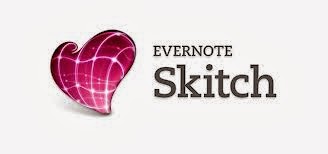On Friday I asked my students to build designs with pattern blocks and then asked "How many lines of symmetry are possible in a design?" I received numerous responses from one to two, four and six. Next I modelled for my class how to capture a design using an iPad App called Skitch that allows users to annotate images using text, colour, and lines.
I was truly amazed with what happened next... as the students discovered the lines of symmetry in their designs, outstanding inquiry questions began to arise such as...
"I wonder if it is possible for a design to only have three lines of symmetry?"
"I wonder if this point in the middle creates the symmetry?"
"I wonder if I could draw tons of lines through the middle point --- making lots of lines of symmetry?"
Below are some of the annotated images.
Listening to the children's questions, I knew that they were ready to be introduced to the concept of rotational symmetry also sometimes referred to as point symmetry. I pulled them together around one of the designs and asked them to tell me more about what they were noticing about the middle point. The child who intially had commented about the importance of the middle point offered his thoughts on why he felt this point was important. He then stood up and went and got his ruler and showed how he could make a line going through any part of the centre point to create a line of symmetry. I highlighted his "big mathematical thinking" and then explained and discussed rotational/point symmetry. I was impressed with the vast number of children who truly understood. Division Five has many budding mathematicians!
I see an endless amount of possibilities for using this app in Mathematics. A colleague of mine had students use it to label 2-D and 3-D objects in the environment. Students went on a "Shape Hunt" with iPads (cameras) in hand and took photos. When they returned to the class they analyzed, sorted, and classified the data... all higher order thinking skills. What ways do envision using this app in Mathematics?











No comments:
Post a Comment